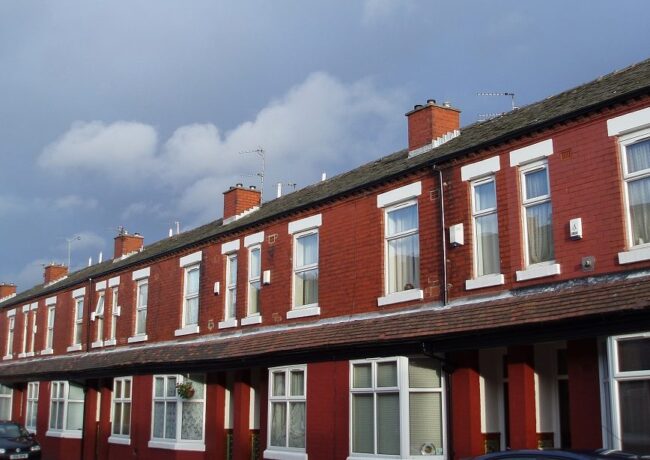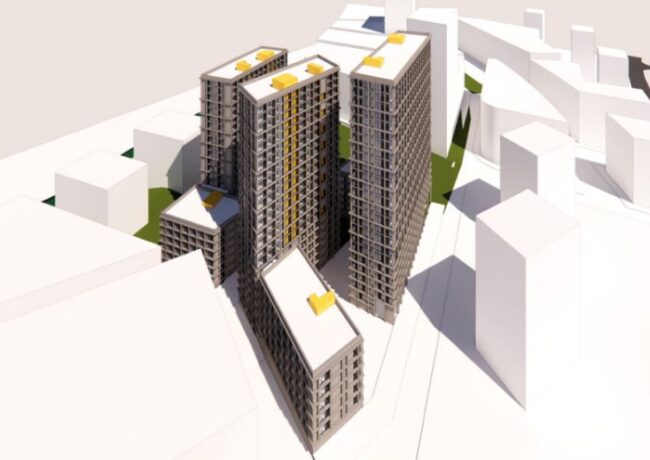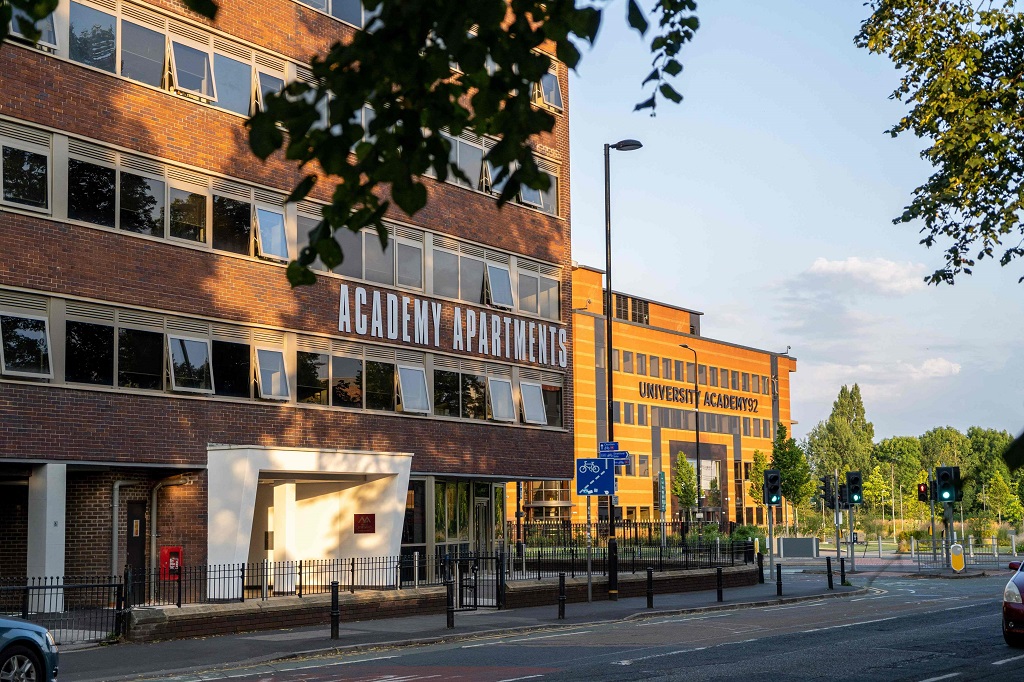More delays for GMSF as tensions come to a head
Further delays are expected to the Greater Manchester Spatial Framework, as the Combined Authority responds to revised population and housing figures; however behind the scenes a gap between the Mayor’s priorities, and the growth agenda of some of GM’s 10 councils, is increasingly growing.
In July, the Office for National Statistics announced that population growth was less than expected for Greater Manchester, prompting Burnham to announce that the publication of the GMSF would be deferred until October to allow for the full implications on the city region’s housing need to be assessed.
The ONS figures feed in to the Government’s Sub National Housing Projections, which have been released this month. Previously, Greater Manchester was working up its plan based on a figure of 211,000 homes needed over a 20-year period. However, based on the changes to population predictions, the number of homes Greater Manchester is now understood to need to deliver is around 154,000.
On the face of it, this figure has been good news for Mayor Andy Burnham, who as one of his key policies has been pushing for a drastic drop in planned Green Belt release, previously justified as necessary to meet the higher housing targets.
A figure of 154,000 homes, senior council planners have said, could be delivered on Greater Manchester’s brownfield sites alone.
The draft GMSF has been going through a rewrite since Burnham became Mayor in 2017. He has publicly called for an 80% reduction in planned Green Belt release, and behind the scenes his political advisor Kevin Lee is understood to have been pushing councils to stop release entirely.
However, certain councils have been pushing back, arguing that delivering the minimum number of homes is not a message of growth for the city region, and targets should be more ambitious. In addition, the GMSF is not all about housing, and is also supposed to identify land for employment uses to enable jobs growth, something which seems to have slipped down the Mayor’s agenda. For councils who have struggled with the recession, dramatic funding cuts, and and exodus of residents and employees from their boroughs to jobs in the city, these targets are important to their future success.
The Government itself is also not confident about its own figures. With a national target of 300,000 homes to be delivered each year, and questions over whether housing projects factor in years of unmet demand, the Government is now consulting on the ONS figures, and is expected to release its own targets by mid-October. Some are predicting that for Greater Manchester, this could take the figure back up towards 210,000.
While the debate is over the level of Greater Manchester’s ambition, Green Belt release is also a massive political football, and in councils with marginal seats, they are taking a more cautious approach and are understood to be insisting that the target of 154,000 homes is correct.
The Greater Manchester Combined Authority meets today, and place directors across the city region are expecting an announcement on the next stages for the GMSF. The GMCA will be waiting on the Government to released its revised housing targets in mid-October, but after that the leaders of GM will still need to debate whether they are happy with that figure, what changes to the GMSF will be needed, and when the draft should be put out to public consultation.
The chief executive of the Combined Authority, Eammon Boylan, is understood to be urging leaders not to delay the process much further, as it will risk pushing the GMSF timescale towards May local elections. Election periods generally bring political uncertainty, leadership changes, and a deadlock on decisions as councillors resist backing vote-losing policies like Green Belt release.
Even once the GMSF is fully formed, it still needs to be approved by all 10 council leaders, and Burnham.
Speaking at Place North West’s Greater Manchester development update yesterday, Cllr Linda Thomas, leader of Bolton Council, described the 10 leaders as “the most unified they have ever been” however did remind the audience that “the GMSF has to be signed off by all the local leaders. If we don’t like it, we don’t have to approve it”.
This all comes with a backdrop of a GMSF which is already massively delayed. The first draft set a target of 227,000 homes a year for the next 20 years, but included release of 4,900 hectares of Green Belt, which was massively unpopular with the public and was spread unevenly across the 10 GM boroughs. Burnham tapped into this wave of discontent when he campaigned to be Mayor in early 2017, and promised a radical rewrite of the GMSF. Once he was voted in he put Salford Mayor Paul Dennett in charge of shaping the plan, focusing on reducing Green Belt release, factoring in more affordable homes, and increasing delivery of homes in town centres.





Devolution in action. Another layer of expensive bureaucracy and more opportunity for procrastination and delay
By Brooklands resi
For my sins I watched the mayoral Q&A at Oldham, I didn’t hear the word delay, instead further figures were being published by government shortly . I have also just watched the GMCA meeting (I really should be doing something else on a Friday) and no mention of GMSF delay (or GMSF in any detail). Only real property point was in principle request (which was agreed) for Mayoral Development Corporation for Stockport to bring together the 3,000 unit development in town centre. I’d say the GMSF needs more delays about as much as Northern Rail does- there needs to be somewhere to house the power.
By steve capper
So, further to the paragraph re Eamonn Boylan…does he mean that the councillors would vote to sell off the green belt now but NOT nearer to an election?
By Phil
I’m not aware that government consults on the official trend based household projections (published Sept 20th). The issue is that using the government’s own new standard methodology for setting housing requirements results in figures well short of the mythical 300,000 pa, which no sensible person would ever regard as achievable without very major council/social house building. Government has announced that it will consult (probably after the Party Conference for pretty obvious reasons) on revisions to ensure it all adds up to the 300,000 pa. How this substantial “fudge” factor will be worked is not known but as it is likely to prove hugely contentious and consequences are not necessarily obvious in terms of distribution. It could yet prove a double whammy for the north which has argued the previous method limited growth, but government could choose to take some of the pressure off the south amid squeals from its Tory heartlands and up the northern figures. But to release Green Belt to satisfy a centrally dictated figure is not going to be easy to sell to an electorate now fully aware that projections suggest growth levels should be 25% lower than before.
By LA Planner
The problem with this Mayor stuff is it is too MancCentric and the whole focus has been on Manchester,Salford and the posh bits of Trafford and Stockport. The rest of the boroughs are too working class and Lancastrian and don’t really fit the image Andy Burnham likes to promote of us all paying £6 for a cup of coffee and living in a mill conversion.The whole focus is on cycle lanes and walking and not proper, cheap transport accessible for all. A fancy cycling scheme in Castlefield is of what use if you are 85 and live in Breightmet?The housing fund is all about Manchester and Salford projects but only the bits of Salford near Mediacity or Chapel street. There is a new Watford Gap in this city and it is called Alan Turing Way.
By Elephant
Phil at 1:07 pm – it isn’t about seling the green belt – for the most part it isn’t owned by the councils (indeed, in some parts of Greater Manchester it is mainly owned, or at least optioned, by developers) – it’s about whether its current status as green belt, which largely precludes development, is changed to enable it to be developed.
By the light of the moon
Think when considering electorate, consideration should be given that the electorate should not be confused with the 27,000 respondees to the original GMSF. The original 27,000 respondees, although vocal do in percentage terms comprise a tiny amount of the electorate of GM and in a large majority of cases (but I appreciate not all) had their own personal drivers for objecting to the original GMSF.
By steve capper
A Labour Mayor overseeing 10 Labour Councils not to be able to swiftly deliber new homes is not a good look, and an easy target for the Conservative Govt to take a swipe at. Don’t be too surprised if the delays continue that central govt takes back that role scoring massive political points and dumping on the Northern Powerhouse concept for good. Please get on with it !!
By Tannoy
If the original plan was poor – which it was, then delaying to get a better plan is just sensible. The original plan for SMBC was embarrassing – building low density unsustainable sprawl over the Green Belt while Stockport town centre died. Thank goodness for Andy Burnham. Suddenly Stockport has found that it can regenerate the town centre and doesn’t need to build on green fields.
By Peter Black
SMBC’s focus on regen next to M60 is highly commendable but for 3,000 units has quite a mountain to climb in proving viability. I may be wrong but I’m concerned that in that location the end sales values just aren’t going to be there to underpin the vision.
By steve capper
We are faced with a period of uncertainty and challenging economic conditions as Brexit is delivered in some form or other – our region needs a platform for growth and to be able to compete as trading patterns adjust. A Green Belt review is overdue and the politicians need to let the Council Officers do their jobs and prepare our region’s land use policy for the future. We desperately need well located employment land that is accessible to new residential development. Sustainable new communities in green belt and situated where people want to live should be carefully considered and not dismissed due to political pressure. GM now needs to be decisive and lead the way.
By PS
By the light of the moon : Yes, I appreciate that a lot of green belt is not publicly owned. It’s probably fair to say that some owners/developers are playing the long game – hoping that either lobbying their individual cases or a policy change will maximise their return in buying it? Presumably they bought it knowing all about the green belt restrictions? My issue is that policy makers appear to be being pushed to change the rules out of the spotlight of local elections. Developers want green belt to make money. Voters have said they don’t want that. This guy seems to be suggesting that the elected representatives change the green belt rules while voters attention is elsewhere. Classy.
By Phil
As has already been said, a green belt review is well overdue. 27000 respondents (a percentage of which were in favour) is a very very small amount compared to the existing population. Those who oppose are always the loudest. I truely believe that many know as much about the reasoning for Green Belt land as they did about Brexit. Either release a small amount now or drive house building into the true ocuntryside where there is no infrastructure.
By GravyTrain
PS : Your argument is a little one-sided. By ‘Political pressure’ do you mean ‘delivering what I promised the people who voted for me’? You’re suggesting planning officers should not be influenced by political pressure. However, council officers are, in my experience, the target of regular lobbying (some might even call it badgering) by developers and their consultants pushing their own agendas; wanting, in this case, the green belt rules amended – or even ignored – to gain planning permission. This is not for some Utopian vision of bringing affordable housing to the masses, it is to maximise profit on the investment they made buying green belt land in the first place. The planning officers are public servants and maybe they should be left alone to do their jobs and make completely impartial recommendations to the elected representatives?
By Phil